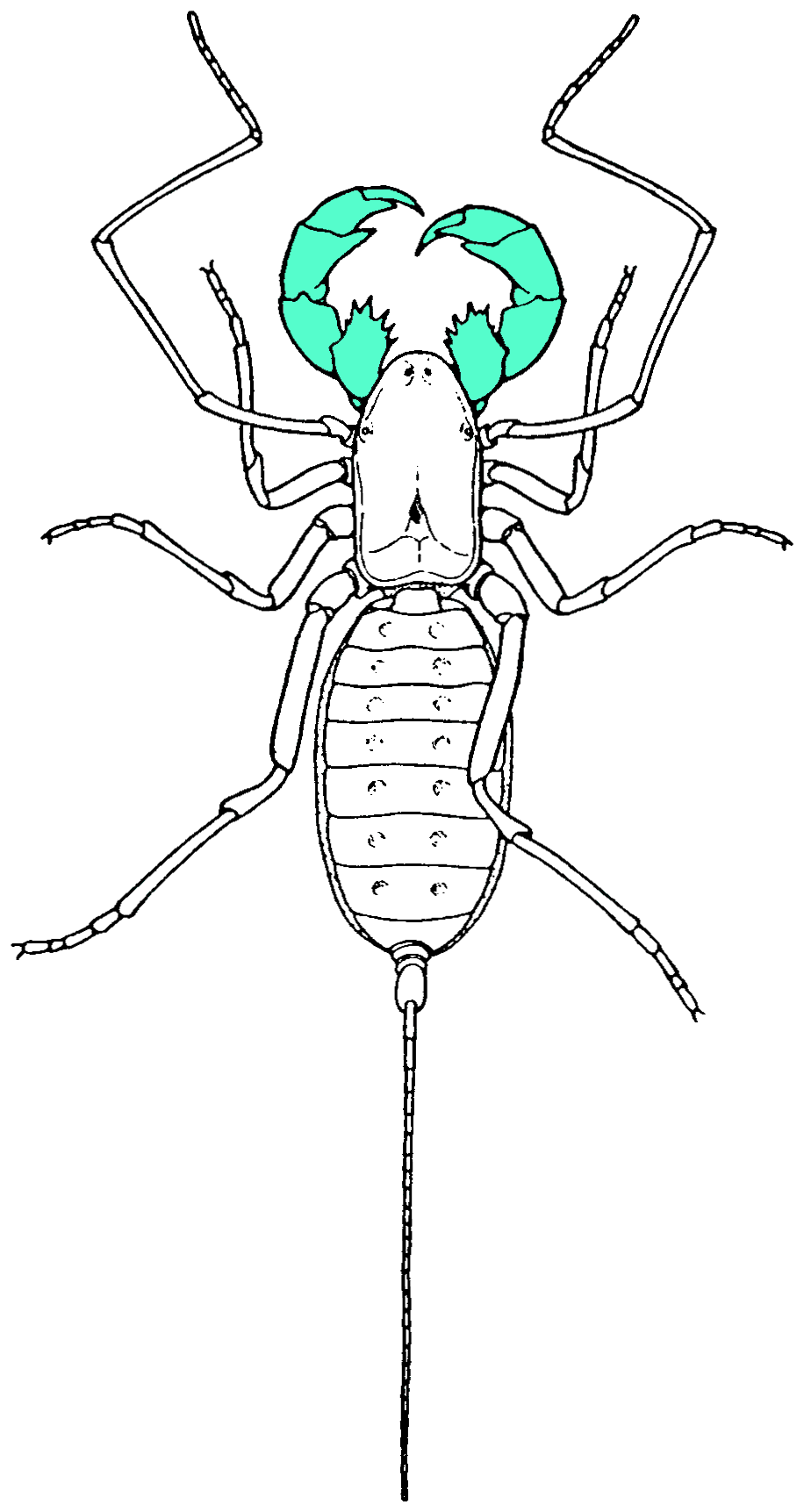|
Geralinura
''Geralinura'' is an extinct genus in the family Thelyphonidae, commonly known as Uropygi, whip scorpions. Fossil evidence found in the midwestern United States and the United Kingdom indicates that this genus lived during the mid-to-late Carboniferous, Carboniferous period. Unlike the subchelate Pedipalp, pedipalps of modern whip scorpions, the pedipalps of ''Geralinura'' are spiked and non-chelate, suggesting that the modern trait evolved at a later point in time. Species The following is a list of all currently described species belonging to the genus ''Geralinura'': * ''Geralinura brittanica'' (Pocock, 1911) * ''Geralinura carbonaria'' (Scudder, 1884) * ''Geralinura crassa'' (Kušta, 1888) * ''Geralinura gigantea'' (Petrunkevitch, 1913) * ''Geralinura noctua'' (Kušta, 1888) * ''Geralinura scudderi'' (Kušta, 1888) * ''Geralinura similis'' (Petrunkevitch, 1913) * ''Geralinura sutcliffei'' (Woodward, 1907) References Uropygi Prehistoric arachnid genera Carboniferou ... [...More Info...] [...Related Items...] OR: [Wikipedia] [Google] [Baidu] |
Geralinura Carbonaria
''Geralinura'' is an extinct genus in the family Thelyphonidae, commonly known as whip scorpions. Fossil evidence found in the midwestern United States and the United Kingdom indicates that this genus lived during the mid-to-late Carboniferous period. Unlike the subchelate pedipalps of modern whip scorpions, the pedipalps of ''Geralinura'' are spiked and non-chelate, suggesting that the modern trait evolved at a later point in time. Species The following is a list of all currently described species belonging to the genus ''Geralinura'': * ''Geralinura brittanica ''Geralinura'' is an extinct genus in the family Thelyphonidae, commonly known as Uropygi, whip scorpions. Fossil evidence found in the midwestern United States and the United Kingdom indicates that this genus lived during the mid-to-late Carbonif ...'' (Pocock, 1911) * '' Geralinura carbonaria'' (Scudder, 1884) * '' Geralinura crassa'' (Kušta, 1888) * '' Geralinura gigantea'' (Petrunkevitch, 1913) * '' Geralinura n ... [...More Info...] [...Related Items...] OR: [Wikipedia] [Google] [Baidu] |
Uropygi
Uropygi is an arachnid order comprising invertebrates commonly known as whip scorpions or vinegaroons (also spelled vinegarroons and vinegarones). They are often called uropygids. The name "whip scorpion" refers to their resemblance to scorpion, true scorpions and possession of a whiplike tail, and "vinegaroon" refers to their ability when attacked to discharge an offensive, vinegar-smelling liquid, which contains acetic acid. The order may also be called Thelyphonida. Both names, Uropygi and Thelyphonida, may be used either in a narrow sense for the order of whip scorpions, or in a broad sense which includes the order Schizomida. Taxonomy Carl Linnaeus first described a whip scorpion in 1758, although he did not distinguish it from what are now regarded as different kinds of arachnid, calling it ''Phalangium caudatum''. ''Phalangium'' is now used as a name for a genus of harvestmen (Opiliones). In 1802, Pierre André Latreille was the first to use a genus name solely for whip s ... [...More Info...] [...Related Items...] OR: [Wikipedia] [Google] [Baidu] |
Samuel Hubbard Scudder
Samuel Hubbard Scudder (April 13, 1837 – May 17, 1911) was an American entomologist and paleontologist. He was a leading figure in entomology during his lifetime and the founder of insect paleontology in America. In addition to fossil insects, he was an authority on butterflies (Lepidoptera) and grasshoppers (Orthoptera). Biography Scudder was born on April 13, 1837, in Boston, Massachusetts, the son of Charles Scudder and Sarah Lathrop (Coit) Scudder. His father was a successful merchant, and both parents had Puritan roots dating back to the founding of the Massachusetts Bay Colony in the 1620s. He was raised in a strict Calvinist Congregational household.Leach (2013) One of his younger brothers, Horace Scudder, became a noted author and editor of the ''Atlantic Monthly'',Cockerell (1911) while his niece Vida Dutton Scudder was a writer and social activist. Scudder attended Boston Latin School, and then enrolled in Williams College in 1853 at the age of 16. He studied with na ... [...More Info...] [...Related Items...] OR: [Wikipedia] [Google] [Baidu] |
Genus
Genus (; : genera ) is a taxonomic rank above species and below family (taxonomy), family as used in the biological classification of extant taxon, living and fossil organisms as well as Virus classification#ICTV classification, viruses. In binomial nomenclature, the genus name forms the first part of the binomial species name for each species within the genus. :E.g. ''Panthera leo'' (lion) and ''Panthera onca'' (jaguar) are two species within the genus ''Panthera''. ''Panthera'' is a genus within the family Felidae. The composition of a genus is determined by taxonomy (biology), taxonomists. The standards for genus classification are not strictly codified, so different authorities often produce different classifications for genera. There are some general practices used, however, including the idea that a newly defined genus should fulfill these three criteria to be descriptively useful: # monophyly – all descendants of an ancestral taxon are grouped together (i.e. Phylogeneti ... [...More Info...] [...Related Items...] OR: [Wikipedia] [Google] [Baidu] |
Pedipalp
Pedipalps (commonly shortened to palps or palpi) are the secondary pair of forward appendages among Chelicerata, chelicerates – a group of arthropods including spiders, scorpions, horseshoe crabs, and sea spiders. The pedipalps are lateral to the chelicerae ("jaws") and anterior to the first pair of walking legs. Overview Pedipalps are composed of six segments or articles. From the proximal end (where they are attached to the body) to the distal, they are: the coxa, the Arthropod leg#Trochanter, trochanter, the Arthropod leg#Femur, femur, the short Glossary_of_spider_terms#patella, patella, the Glossary_of_spider_terms#tibia, tibia, and the Arthropod_leg#Tarsus, tarsus. In spiders, the coxae frequently have extensions called Glossary_of_spider_terms#maxilla , maxillae or gnathobases, which function as mouth parts with or without some contribution from the coxae of the anterior arthropod leg, legs. The limbs themselves may be simple tactile organs outwardly resembling the legs ... [...More Info...] [...Related Items...] OR: [Wikipedia] [Google] [Baidu] |



